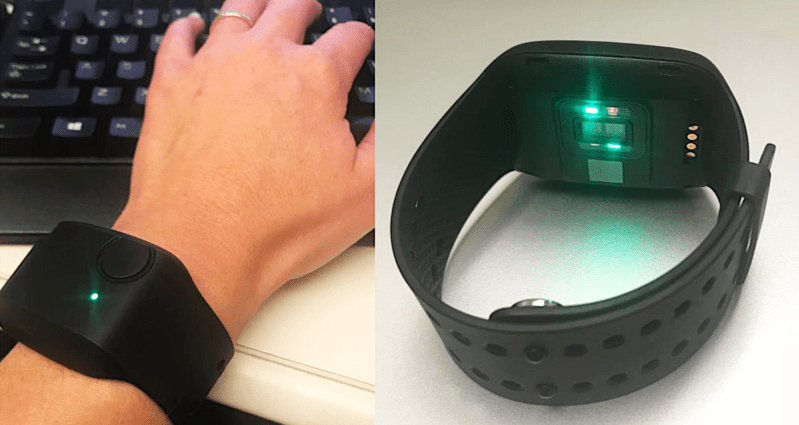Oftentimes, the feature set for our typical fitness-focused wearables feels a bit empty. Push notifications on your wrist? OK, fine. Counting your steps? Sure, why not. But how useful are those capabilities anyway? Well, what if wearables could be used for a more dignified purpose like helping people in recovery from substance use disorder (SUD)? That’s what the researchers at the University of Massachusetts Medical School aimed to find out.
In their paper, they used a wrist-worn wearable to measure locomotion, heart rate, skin temperature, and electrodermal activity of 38 SUD patients during their everyday lives. They wanted to detect periods of stress and craving, as these parameters are possible triggers of substance use. Furthermore, they had patients self-report times during the day when they felt stressed or had cravings, and used those reports to calibrate their model.
They tried a number of classification models such as decision trees, discriminant analysis, logistic regression, and others, but found the most success using support vector machines though they failed to discuss why they thought that was the case. In the end, they found that they could detect stress vs. non-stress with an accuracy of 81.3% and craving vs. no-craving with an accuracy of 82.1%. Not amazing accuracy, but given the dire need for medical advancements for SUD, it’s something to keep an eye on. Interestingly enough, they found that locomotion data alone had an accuracy of approximately 75% when it came to indicating stress and cravings.
Much ado has been made about the insufficient accuracy of wearable devices for medical diagnoses, particularly of those that measure activity and heart rate. Maybe their model would perform better, being trained on real-time measurements of cortisol, a more accurate physiological measure of stress.
Finally, what really stood out to us about this study was how willing patients were to use a wearable in their treatment strategy. It’s sad that society oftentimes has a very negative perception of SUD patients, leading to fewer treatment options for patients. But hopefully, with technological advancements such as this, we’re one step closer to a more equitable future of healthcare.
















Can’t wait for these to be mandatory in the workplace.
Looks already like electronic tagging on delinquents. In companies you’ll get an immediate call of the lifestyle guru and mandatory zen workouts to raise productivity, as well as detox in a corporate blacksite.
/sarc
I can only see this work for people who want to voluntarily break a vicious addiction cycle.
Isn’t that the case for any treatment for addictions?
As opposed to opiods doctors have peddled to their patients for years? Yeah…
Movement, temperature, pulse and breathing rate can already be measured using cameras. I wouldn’t be surprised if camera surveillance gets a new feature soon.
Noble goal, but I do wonder if the low accuracy was due to the the particular bracelet used for the experiment.
I had the occasion of using one of those during a research experiment in our institute, in which we tried to assess physiological effort during a series of tasks by measuring heart rate, galvanic response of the skin, and so on.
Unfortunately we also had data which were off by a long shot and didn’t make any sense, especially for what concerns sudoration. It seems like this particular product is ambitious but lacks delivery.
I suppose it’s got to be better than AA
If AA still used psychological counseling and psychoactive therapy, like its founder succeeded with, it might be useful.
Remember, Bill had some guided meditations on LSD to “find his higher power” and see how he was affecting others. It was never meant to be purely self-guided introspection.
Remember:
Bill was kicked out out for stealing money.
Bob was kicked out for 13th stepping the ladies.
‘I’d rather have a bottle in front of me, than have to have a frontal lobotomy!’ (Classic Dr Demento, don’t recall the singer.)
I’ll take Corzo, than Casadorez once pallet numb. Screw the anti-fun brigade.
Good on Bob BTW! Feeling a little ‘anxious’, might hit a meeting for some 13th stepping myself.
Citation for the LSD story? Would require a time machine to be true, hippies love to lie for their cause so very skeptical. Worse than thumpers.
I sincerely hope you’re being flippant with regards to your musing on “hitting a meeting for some 13th stepping yourself”. Taking advantage of those already in a bad place really isn’t cool.
Actually, Timothy Leary did legit work with alcoholics using LCD. Ihave a book published by Sandoz of papers about LSD, and I think there’s a few in there.
It was a drug in search of a use, and because there were studies on a variety of uses for LSD that a whole bunch of people had a chance to try it, which then ade it popukar, which then made it illegal.
So studies stopped. There’s actually some attempts to restart those studies now.
So it’s not a fantasy. I have no idea if the fiunder of AA tried LSD.
Ah, the standard naïve (in the science sense) approach of collecting a bunch of random data and looking for correlation among several degrees of freedom. Given enough random data you’ll always find *something* that correlates. If it doesn’t have a solid connect-the-dots causality chain, then you better have a few sigmas of confidence before you can believe stuff like this. 82% ain’t good enough — the ROC curves they publish are an embarrassment to science.
A fun related website: https://www.tylervigen.com/spurious-correlations
“Given enough random data you’ll always find *something* that correlates. ”
This is the basis for alchemy, the modern version is all dressed up with fancy charts and math but it’s the same old bunkum. Theodoric of York lives on.
Will end up being an abusive boss detector.